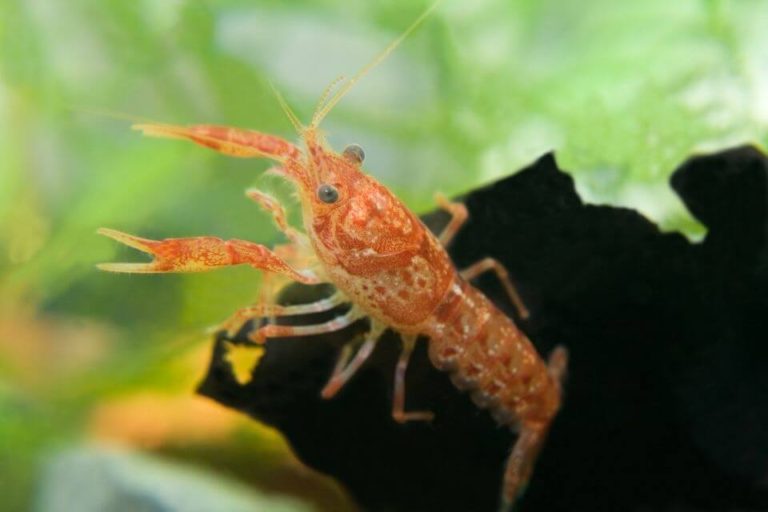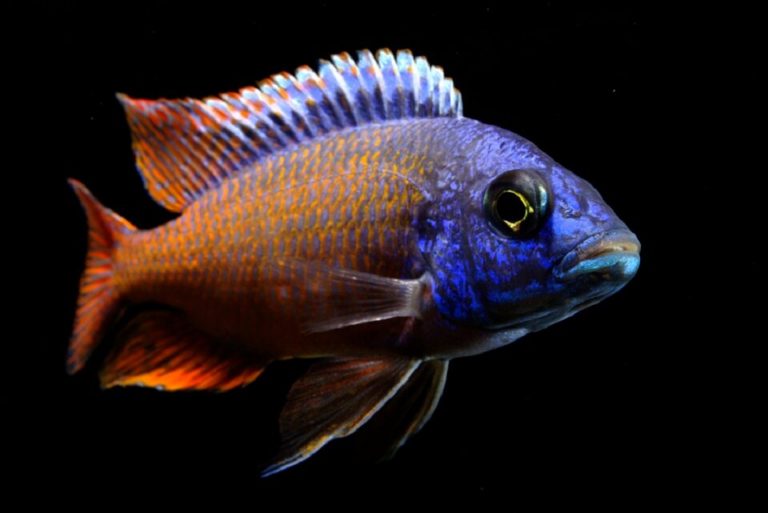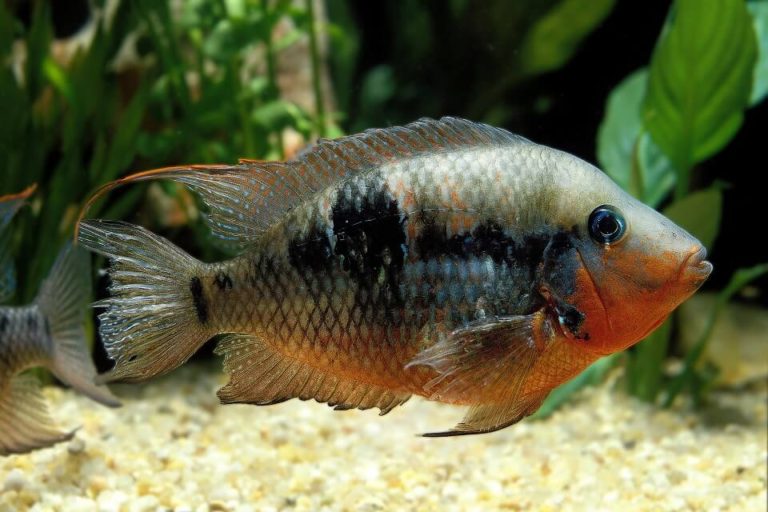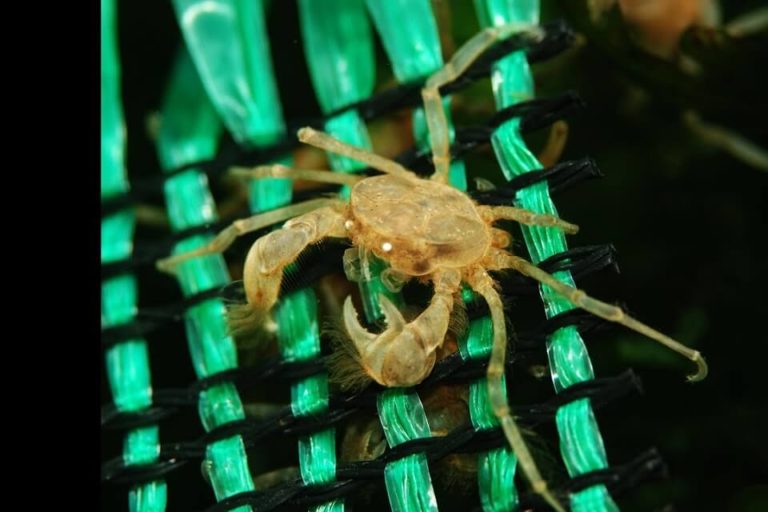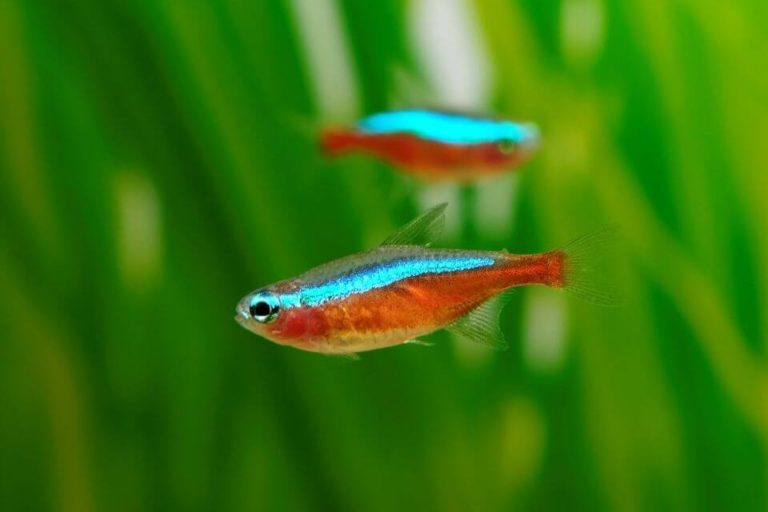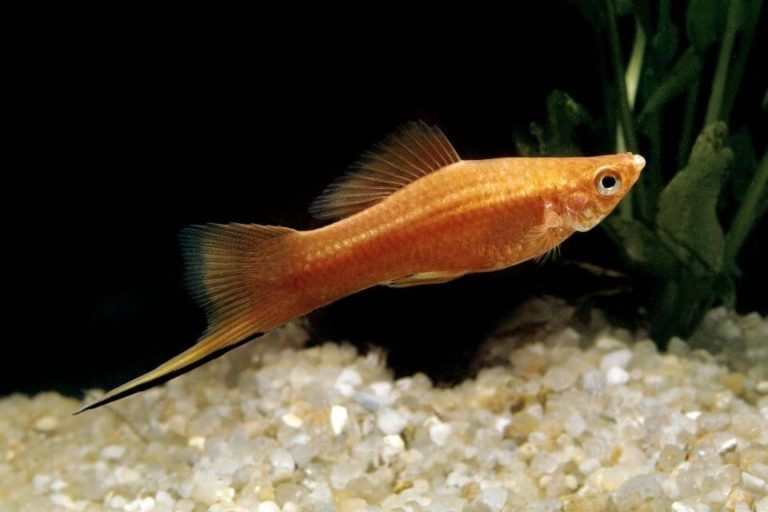Dojo Loach Care: Tank Mates, Tank Size, Feeding And More

Dojo Loach is one of the favorable fish among various aquarium fish species that you can keep in your freshwater fish tank if you are a fish enthusiast.
One of the best freshwater fish species you ought not to miss in your aquarium is the Dojo Loach. These fish are friendly and active and their looks are a unique addition to your freshwater collection.
Additionally, these Loaches species’ unique appearance is an excellent addition to the décor of your tank space. Their energetic and friendly nature will keep you entertained in the room for a long.
In this Dojo Loach care guide, we are going to provide you with all the details you may need to know about this fish species ranging from their appearances, size, and care to tank mates, breeding, food, and diet.
| Quick Facts: | |
|---|---|
| Common Names | Dojo Loach, Dojo fish, Pond Loach, Oriental Loach, Japanese Weather Loach, Weather loach, Oriental Weatherfish, Chinese Weatherfish, Golden Dojo Loach |
| Origin | Native to the East Asian region |
| Family | Cobitidae |
| Scientific Name | Misgurnus anguillicaudatus |
| Care Level | Easy |
| Temperament | Peaceful |
| Social | Community fish |
| Diet | Omnivores |
| Size (average) | 6 - 12 inches |
| Lifespan | 7 - 10 years |
| Breeding | Egg layer |
| Minimum Tank Size | 50 gallons (approximately 70 liters) |
| Tank Setup | Freshwater, Fine grand sand substrate, Driftwood, and Rocks for decorations, A lot of live plants. Do not mix sharp objects with the substrate. |
| Tank Temperature | 55 - 72 °F (13 – 22 °C) |
| Water Hardness | 5 - 12 dKH |
| Water pH Level | 6.5 - 8.0 |
Species Overview
Dojo Loach is an amazing freshwater fish that belongs to the family of Cobitidae. The scientific name is Misgurnus anguillicaudatus. This freshwater fish has an imposing personality, making it an excellent choice for most aquarists.
Additionally, this fish has other common names apart from Dojo Loach, such as Dojo fish, Pond Loach, Oriental Loach, Japanese Weather Loach, Weather loach, Oriental Weatherfish, Chinese Weatherfish, Golden Dojo Loach, and many more.
Cantor first described Dojo Loach in 1842, and it is native to Asian countries such as Japan, China, Korea, northern Vietnam, and Siberia.
Currently, this fish has been spread and introduced in various areas globally, such as Italy, Germany, Spain, Uzbekistan, Canada, Australia, and the United States.
It is a bottom dweller, and in its natural habitat, they inhabit shallow waters with a thick amount of plant life with muddy substrates like ponds, bogs, streams, and rivers.
Further, Dojo Loach has a peaceful temper and exciting behavior, making them excellent community creatures. They are also known to be very sensitive to atmospheric pressure and weather changes.
This is because when in the tank or its natural habitat, they will start demonstrating disquiet behavior, looking out from the water and swimming all around the tank in case of weather changes.
On some occasions, you will notice Pond Loach going into a vertical swimming position as each storm approaches. Moreover, apart from weather changes, Dojo Loach’s behavior can be used to discover natural disasters like tsunamis and earthquakes.
Pond Loach is hardy by nature and easy to keep making it an excellent choice even for beginners.
Dojo Loach Size
The sizes of fully grown Weather Loach may differ when in captivity and when in the wild. A fully grown Dojo Loach size is usually around 6 inches when they are in captivity settings.
However, if you provide them with spacious tanks to grow in the aquarium, Pond Loach size can grow to more than 6 inches under optimal care.
Apart from spacious surroundings in the aquarium, you will have to ensure well-maintained conditions for them to grow to more than 6 inches. In their natural habitats, Dojo Loach size can grow up to around 12 inches long.
The female Golden Dojo Loach (syn.) have larger bodies than their male counterparts.
Dojo Loach Lifespan
Multiple factors may influence the Dojo Loach lifespan. Factors such as health and good care play an integral role in the lifespan of Pond Loach.
When you take good care and keep them in excellent water conditions in the aquarium, Dojo Loach lifespan can be between 7 to 10.
Despite Weather Loach being tolerant to a wide range of living conditions, it is advisable that you try to mimic its natural habitat in the wild as much as possible.
Keep the water quality perfect and provide them with ample space such as large tanks if you want them to live long and healthy lives in your aquarium.
INCREASING THE WATER TEMPERATURE IN THE AQUARIUM AND STRESS WILL CUT IN HALF THE LIFESPAN OF THE DOJO LOACH IN THE TANK.
Behavior and Temperament
They are very peaceful freshwater fish species. When they feel threatened, either in their natural habitat or in the tank, they will hide. Additionally, they will stay out in the open in your aquarium when they are comfortable.
They are also social and playful when they are in a group, and therefore you should keep them in a large tank in a group of at least three. Moreover, Pond Loach is also friendly with humans.
When you take good care of them in the tank and even get used to them, they will allow you to touch and feed them by hand. While in the aquarium, you will find these freshwater fish species exploring the tank.
This is because they are notorious escape artists by nature. Should they find an escape route in the aquarium, they will take advantage of them to try and jump out of the tank.
If you have not secured your tank with a lid, you may find Weather Loach on the floor, and the best thing to do is to introduce them back to the aquarium.
Because of their peaceful and friendly nature, they can be kept together with other gentle and slower fish species in the same tank.
Furthermore, this fish are bottom dwellers, and therefore you may spot them near the bottom of the tank or at times burrowing into the substrate with just their eyes peeking through.
Appearance and Colors
Dojo Loach is sometimes mistaken for Eels in some parts of the world. Generally, these freshwater fish species have long and slender bodies plus very small fins.
Additionally, they rounded like Eels on the upper portion of their bodies, which flattens out towards their tail. Weather Loach features relatively small fins, and its dorsal fin is located close to the tail on the last third part of its body.
The pectoral fins are located behind its gills. Like other fish in the Loach family, Its’ head is pointed with their mouths downturned. Further, Pond Loach has up to six sensitive barbels surrounding their mouth for various purposes.
It will help them to sense food and dig through the substrate to hide by burying themselves. The fish also has multiple small barbels just below the eyes.
There are a lot of varieties of Dojo Loach when it comes to color.
Common Dojo Loach:
It has a brown to yellow color. Its upper part of the body features a marbled pattern of greenish-gray to dark brown that fades to a paler shade underneath.
Golden Dojo Loach:
They have an elongated body with small visible scales. Additionally, they have a tall rounded fin, infraorbital spine under their skin, plus over ten barbels around their mouths.
They have brown or yellow eyes, and their general appearance is always goldish yellow.
Albino Dojo Loach:
They have the same body as other Dojo Loaches. Their eyes are red. Their body does not have the color pigment. The difference between male and female Dojo Loach is very subtle.
However, if you look at them keenly while they are in the tank, you will notice that some have larger bodies than others. The female Dojo Loach have larger bodies than their male counterparts.
When you look at the fish from above while in the aquarium, you will notice that the males have enlarged pectoral fins and feature horizontal patterns behind their dorsal fins.
Dojo Loach Care
If you want to keep Pond Loach happy and increase their lifespan in your aquarium, it would be best if you look out for specific requirements.
Dojo Loach is hardy, and caring for them is very easy, making them an excellent choice for beginner aquarists. Additionally, Pond Loach can live in water temperatures that other fish may find uncomfortable.
In their natural habitat, Weather Loach lives in shallow rivers, paddies, streams, and even ditches due to their ability to use their intestines to derive oxygen from the air.
Therefore, they can survive in places with deficient oxygen levels. However, you should provide and take good care in your aquarium if you want them to be happy and live longer.
– Dojo Loach Tank Size
Pond Loaches (syn.) are freshwater fish species that are bottom dwellers. Additionally, they love swimming and exploring. Hence, you should provide a sizable tank for them to stay happy and healthy and have an extended lifespan.
These fish species can grow very long, and therefore keeping them in a small aquarium will make them feel cramped and uncomfortable. Therefore, the minimum Dojo Loach tank size would be 55 gallons.
Besides, the dimensions of the aquarium are also critical. In order to provide ample swimming room for Pond Loach, the tank should be at least 4 feet long.
If you plan to keep more than one Dojo Loach in the aquarium or keep it with other peaceful freshwater fish species, you should get a larger tank of about 100 gallons.
– Dojo Loach Tank Setup
Pond Loach is a hardy fish species. However, if you want them to be happy, comfortable, and live longer in the tank, you should try as much as possible to create an environment that resembles their natural habitat.
-
Substrate
Additionally, Weather Loaches are bottom-feeders and dwellers, plus they love to dig. You may even find them burrowing in the substrate or hiding in the early stages after introducing them to the aquarium since they may not be comfortable.
It would be best if you, therefore, chose fine sand as a substrate. In addition, the substrate should be soft since coarse and sharp materials such as gravel may easily cut them as they swim or burrow at the bottom of the tank.
-
Decorations
When it comes to decorations, you can choose natural or artificial decorations, depending on your preference. However, you must ensure to provide multiple hiding places in the tank for Dojo Loach.
The hiding places will prove them excellent shelters whenever they feel threatened or scared in the aquarium, especially during the early stages when you are introducing them to the tank.
You can use driftwood or aquarium plants in the aquarium to provide them with hiding places. You can also use plastic decorations, provided they are sizable enough for them to fit in and hide.
Should there be no hiding places for Pond Loach to rest, you may find them burying themselves in the substrate.
Further, apart from large pieces of driftwood, you can also use large plants provided they are well anchored to prevent them from being uprooted as they dig.
-
Aquarium Water Fileter
Pond Loach prefers moderate flow, and filtration is essential for providing oxygen in the aquarium. You can ensure moderate flow in the aquarium and keep it oxygenated by using a filtration system below the substrate or air stones.
Weather Loach loves swimming and exploring, plus they are cunning escape artists. Therefore, they can swim up the filter tubes in the tank, or if the tank lid is not secured, they may leap out of the tank.
You are therefore advised to take a look at your aquarium for all possible escape routes. It would be best if you also clipped or taped the tank’s lid to make sure it does not fall off when upon their jumping activities.
In Addition sponge or filter media fill larger filtration tubes to prevent these cunning escape artists from getting through the openings. Dojo Loach loves shady hiding spots. Therefore, you should have plenty of covers in the tank
-
Aquarium Light
Because Pond Loach is a nocturnal fish species and prefers to be under very low lighting you should keep the aquarium light to dim settings to make them comfortable.
– Water Conditions and Parameters
They can be found across the globe, and they are a source of food in multiple countries. You can find Dojo Loaches living in shallow water bodies such as streams, rice ponds, small lakes, and many more in the wild.
They are generally tolerant to a wide range of water conditions. However, it is advised that you try to mimic its natural habitat as much as possible for Pond Loach to stay happy, healthy, and live longer.
Here are the ideal water perimeter and condition for the tank.
- Water temperature: 55 – 72 °F (13 – 22 °C )
- Acidity levels: 6.5 – 8.0
- Hardness of water: 5 to 12 dKH
- Water flow rate: Moderate
– Best Aquarium Plants To Use
The most suitable aquarium plants to keep in an aquarium with Dojo Loach are that have a strong routing system. They should be anchored properly to prevent them from being uprooted when they dining the substrate.
Some of the plants are;
– Possible Diseases and Prevention
Despite Dojo Loach being hardy, they may have health issues just like other fish. Here are the possible diseases and prevention: –
-
Ich (White Spot Disease)
This condition is mainly caused by a free-swimming aquatic parasite known as Ichthyophthirius multifiliis. You will spot the Dojo Loach rubbing against objects in the aquarium in the early stages.
After the disease progresses, you will notice sparkling white dots developing on the fish’s body, gills, and fins. You can prevent and treat this condition by raising the tank temperature to 82° F for three consecutive days.
You can also treat the water in the tank with medication.
-
Flukes
These are aquatic parasites, and they will cling themselves to the gills and body of the affected Dojo Loach. As a result, you will spot it rubbing against solid objects and secreting mucus.
You can treat this condition by the use of antiparasitic medication.
-
Fungal infections
This condition is characterized by white cotton-like growths in the body of Dojo Loach. You can prevent and treat this condition by quarantining the affected fish and treating the tank plus the fish with antifungal medication.
-
Bacterial infections
Internal parasites cause this condition. As a result, you will see Dojo Loach losing weight in the tank despite a proper and balanced diet. You can prevent and treat this condition by the use of antiparasitic medication.
Dojo Loach Diet and Feeding
Pond Loach mainly feeds off organic matter such as algae in their natural habitat. In the aquarium, you can feed them anything you can provide since they are omnivores. For example, you can feed them small algae snacks.
Additionally, you can give them dried pellets as an easy option for meeting their dietary needs. You should also provide them with sinking pellets because of their bottom-dwelling nature.
Further, you can add dry food with live or frozen snacks in the tank. Other foods include tubifex worms, insect larvae, freshwater aquarium snails, and small invertebrates.
Gender Differences
The difference between male and female Dojo Loach is very subtle. However, if you look at them keenly while they are in the tank, you will notice that some have larger bodies than others.
The female Pond Loach have larger bodies than their male counterparts. When you look at the fish from above while in the aquarium, you will notice that the males have enlarged pectoral fins and feature horizontal patterns behind their dorsal fins.
Dojo Loach Breeding
Breeding Dojo Loaches is never an easy task, despite caring for them is easy. The requirements for breeding are challenging, and therefore most aquarists rarely attempt the process.
For breeding to occur, you should ensure there are cold temperatures in the tank for several months. This will also not ensure breeding success.
The female Dojo Loach will lay around 50 eggs at a time. It will lay the eggs whether or not you plan to spawn. First, the male will stimulate the female to release a cloud of eggs during breeding by wrapping himself around the female.
After that, you will need to separate them from their eggs since they do not have any parental behavior, and they may even eat the eggs after laying them.
It will take around 2 to 3 days for the eggs to hatch. After the eggs hatch, you can feed them infusoria for multiple weeks till they are large enough to feed on baby brine shrimp.
Dojo Loach Tank Mates
Pond Loaches are known to be peaceful and friendly, making them an excellent choice for community tanks. Additionally, they are bottom dwellers. If you want them to be happy, you can keep them in a group of 3 or more.
They are not aggressive, and they easily socialize with other non-aggressive tank mates. Since they are bottom dwellers, you can keep Dojo Loach in the same tank with middle and top tank dwellers as Dojo Loach tank mates.
Here are some good Dojo Loach tank mates to consider:
- Fantail Goldfish
- Black Moor Goldfish
- White Cloud Mountain Minnows
- Rosy Barbs
- Leopard Danios
- Harlequin Rasbora
- Kuhli Loach
- Zebra Danios
- Paradise Fish
- Opaline Gourami
- Dwarf Gourami
Origin and Distribution
It is believed to have been first described by Cantor in 1842. Weather Loach is native to East Asia countries like central China, Japan, Korea, Hainan, and even Siberia.
This freshwater fish species are available in a wide range of water conditions. In the natural habitat, you can find Dojo Loach in locations with muddy bottoms such as rivers, lakes, swamps, rice paddies, ponds, and other slow-moving water.
Unfortunately, despite this freshwater fish species being listed on the IUCN Red List as being the least of concern, in some areas, its numbers are decreasing because of ecosystem degradation and increased agriculture.
Generally, it is a hardy fish species in nature, and they have been introduced in various locations around the globe.
Currently, you can find Pond Loach wild populations in multiple locations apart from its original habitats. Apart from keeping it as a pet and being used to predict weather changes.
They are one of the main fish food sources in some countries because of their medicinal value they have.
FAQs
Is A Dojo Loach Aggressive?
Dojo Loaches are always peaceful and playful towards other peaceful tankmates. Therefore, they are not aggressive.
Do Dojo Loaches Eat Other Fish?
These Loaches are omnivores, and they may eat anything they come in contact with. When they eat food that is not required, they will spit over it. They can eat the smaller fish that are in the aquarium.
Therefore, it is not advised for you to keep them together with smaller fish.
Will A Dojo Loach Eat Snails?
Yes, Pond Loach will eat snails since they snack on freshwater aquarium snails and small invertebrates.
How Big Do Dojo Loaches Get?
Most of them measure up to 6 inches long when they are fully grown in captivity. However, if you provide ample space and take good care of them, Dojo Loach can grow to more than 6 inches.
In their natural habitat, Dojo Loach can grow up to 12 inches long.
Where Is Dojo Loach for Sale?
You can find Dojo Loach for sale in any aquarium supplier, pet shop, and major chain store. Additionally, they can be found in the wild in many places across the world.
How Much Is a Dojo Loach Cost?
A single Dojo Loach can cost between $7 to $12, depending on the region and availability.
Conclusion
Knowledge is power. With the above details, you will be able to have an easy time keeping Dojo Loach in an aquarium in your home, even if you are a beginner. Additionally, Dojo Loaches are approachable, friendly, and hardy.
Therefore caring for them in the aquarium is a hassle-free experience even if you are a beginner. With these freshwater fish species in your home, the aesthetics of the room will improve.
You will always be entertained due to the active nature of Weather Loach. Having Pond Loach is one of the best experiences since you will easily know changes in the atmospheric pressure and other things.


